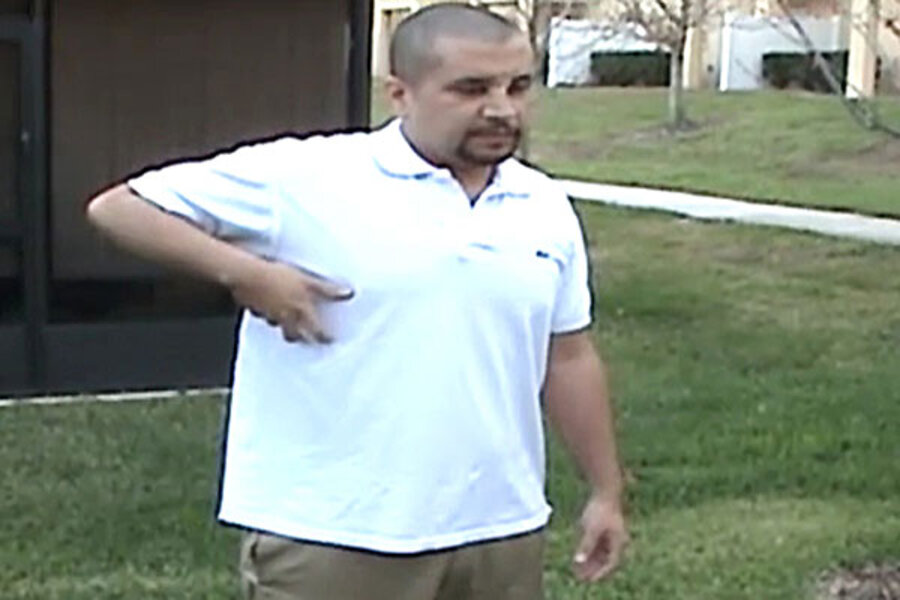Sanford detective wanted manslaughter charge for George Zimmerman
Loading...
| Miami
George Zimmerman had a broken nose, a bruised head and passed two voice-stress lie-detector tests in the wake of his deadly fight with Miami Gardens high school junior Trayvon Martin.
But police records released Tuesday show in greater detail how the Sanford detective investigating the case was unconvinced that Zimmerman was legally justified when he shot Martin. Detective Chris Serino believed Zimmerman jumped to a “faulty conclusion” about Martin, an unarmed teen who he said never used deadly force when he battered Zimmerman and caused him to frantically scream for help 14 times.
Days after several recorded interviews between Serino and Zimmerman were made public, the detective got a new job: On July 7, he starts in his new assignment as a uniformed patrolman on the graveyard shift, at the same pay.
RECOMMENDED: How 5 young black men see the Trayvon Martin case
“It’s not a demotion,” Sanford Police spokesman Sgt. David Morgenstern said of Serino, 45, who has been with the department for 15 years.
“There isn’t any more prestige in being a detective. We have officers who love uniform patrol. This was of his own free will.”
The new assignment was announced less than a week after former Sanford Police Chief Bill Lee was fired over the public outcry that resulted from the department’s handling of the case. And it was revealed hours after State Attorney Angela Corey released another batch of evidence in Zimmerman’s second-degree murder trial, raising speculation that Serino’s move to patrol was directly related to the controversial case.
Serino “got demoted because he told the truth,” said Benjamin Crump, an attorney for Martin’s family.
On Tuesday, prosecutors released several videos and audio tapes, most of which had already been made public last week by Zimmerman’s attorney, Mark O’Mara. One video released Tuesday shows several minutes of previously unseen footage of Zimmerman discussing with police his doctor’s diagnosis of his injuries.
“I have a broken nose. She says I could use stitches, but she’d rather not put them in — as long as I didn’t mess with my head. My skin is already healing nicely,” Zimmerman said at the end of a video where he walked through the scene with investigators the day after the Feb. 26 shooting. “She says I didn’t need to put stitches in right away.”
As to the absence of wounds on other parts of his body, Zimmerman said: Martin “was just focused on my head.”
Zimmerman said that his doctor also advised that he needed to let the swelling in his nose go down before it could be treated. Sanford Detective Doris Singleton noticed that the inflammation on the side of Zimmerman’s bruised head had gone down.
“My wife is an RN student, so she went to work,” Zimmerman said. “Good to keep her busy, I guess.”
An unedited version of Serino’s sworn statement shows he believed the injuries were “marginally consistent with a life-threatening violent episode described by him, during which neither a deadly weapon nor deadly force was deployed by Trayvon Martin.”
Serino recommended a manslaughter charge, and explained in his report that Zimmerman was initially released because his account “appeared generally consistent with the facts and circumstances known at the time.”
His sworn statement recommending a manslaughter charge was signed March 13, before the anti-Zimmerman protests had swept the nation — and after his chief publicly said there was no probable cause to make an arrest.
Serino said the relative size of the two fighters, coupled with the fact that neither had specialized training in hand-to-hand combat, meant Zimmerman was not at any “exceptional disadvantage” when the two scuffled on the ground.
But he acknowledged that no one could refute Zimmerman’s story that Martin attacked him without provocation.
Serino’s statement made note of the fact that Zimmerman had called police to report the “suspicious” presence of a black male on at least four prior occasions. Just a few weeks before the killing, one of the black men had broken into a neighbor’s home.
“Zimmerman, by his statements made to the call taker and recorded for review and his statements made to investigators following the shooting death of Martin, made it clear that he had already reached a faulty conclusion as to Martin’s purpose for being in the neighborhood,” Serino wrote.
He said Zimmerman spotted Martin twice, but didn’t use the opportunity to introduce himself. Zimmerman said he was afraid, but Serino was skeptical.
“His actions are inconsistent with those of a person who has stated he was in fear of another subject,” Serino added. “Investigative findings show that George Michael Zimmerman had at least two opportunities to speak with Trayvon Benjamin Martin in order to defuse the circumstances surrounding the encounter. On at least two occasions, George Michael Zimmerman failed to identify himself as a concerned resident or a neighborhood watch member to Trayvon Benjamin Martin.”
(EDITORS: BEGIN OPTIONAL TRIM)
Prosecutors released a video of Zimmerman taking a computerized analysis that measured the stress in his voice. In it, he answered a brief series of questions such as “Is the wall green?” and “Were you in fear for your life when you shot the guy?”
“Mr. Zimmerman was subjected to two exams and was found to be classified as ‘no deception indicated,’” Sanford Police investigator William Erwin wrote.
After a media firestorm and rallies nationwide, Zimmerman’s case was taken away from the Sanford Police and reassigned to the Florida Department of Law Enforcement. Records show that a month after Martin’s death, Zimmerman gave the FDLE permission to search his Blackberry cellphone.
The special prosecutor assigned to the case by the governor charged Zimmerman with second-degree murder, which carries a possible life sentence. He is currently being held without bond in a Seminole County Jail. A hearing will be held Friday to determine whether he should be released pending trial.
RECOMMENDED: How 5 young black men see the Trayvon Martin case
———
©2012 The Miami Herald







